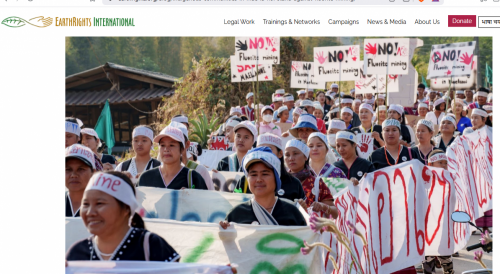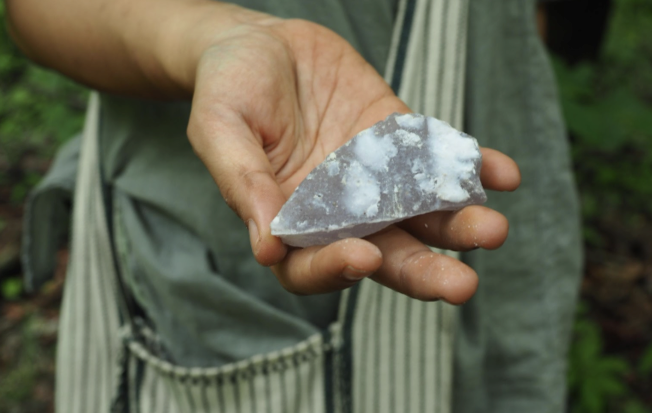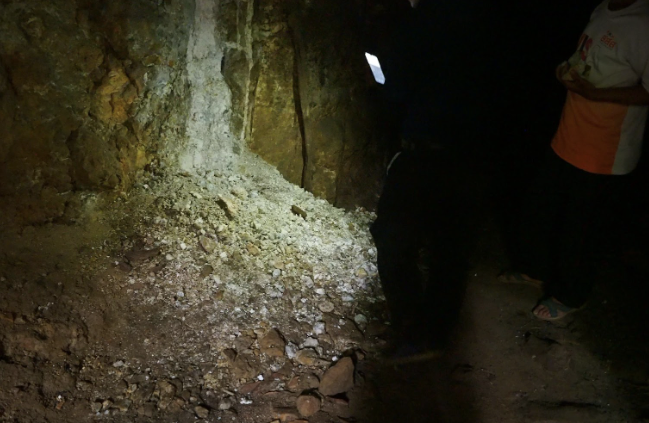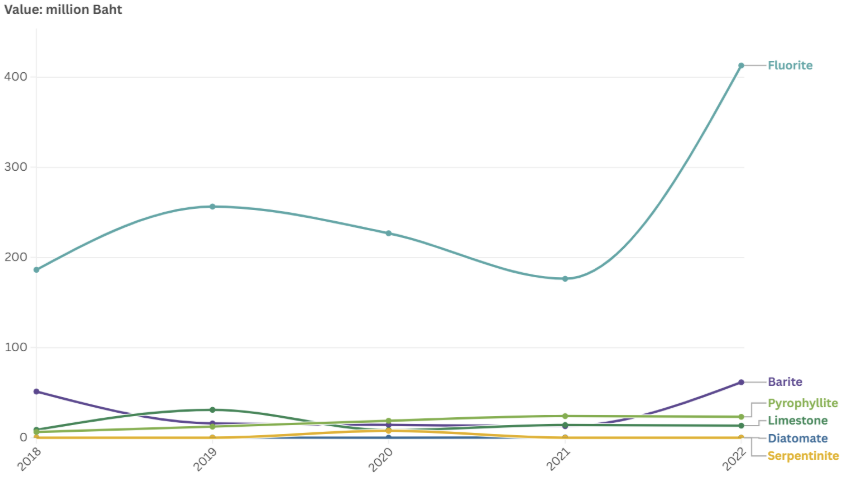
https://earthrights.org/blog/indigenous-communities-in-mae-la-noi-stand-...
This gathering served as a moment for reflection on their ongoing efforts and a reaffirmation of their solidarity in the fight to protect their environment, livelihoods, and way of life. Around 200 people joined in support, underscoring the continued resolve of the Indigenous communities to resist the threats posed by mining.
The movement has gained momentum through awareness campaigns, mobilization, and legal advocacy. In 2023, the formation of the La River Conservation Network or Save Mae La further reinforced solidarity among the Indigenous communities in their ongoing resistance to mining.
Indigenous youth speak out against fluorite mining
Indigenous community members in Mae La Noi, particularly the youth, have raised concerns about the potential harm mining could bring to their land and livelihoods. If approved, the project poses a serious threat to the La River—a vital source of water, food, and sustenance for the community—by risking contamination and environmental degradation. Any pollution from mining could disrupt their way of life, endangering both their natural resources and cultural heritage.
“Fluorite mining devastates the environment, causes pollution, and disrupts the harmony of our communities,” said Maem, a young person from Huai Makok. Her village, located less than 3 kilometers from the planned mining site, is one of five communities that will be directly affected by the project.
The proposed mining site is located in a watershed near the La River, potentially impacting approximately 500 residents across five villages. Although the project’s Environmental Impact Assessment (EIA) has yet to begin, Indigenous communities remain vigilant. They are deeply concerned that the use of toxic chemicals in mining could contaminate the La River, endangering both human health and the surrounding environment.
“If the mining project moves forward, we will lose our natural resources —trees, medicinal herbs, and vital sources of food and water. This will deeply affect our way of life and the livelihoods of our communities,” said Nopphawit, another young resident.
Wilaiporn, whose village lies just half a kilometer from the planned mining site, voices concerns about its health impacts, stating, “Pollution from mining may lead to frequent illnesses for both people and animals.”
The Impact of Fluorite Mining in Thailand
A 2021 report from Thailand’s Department of Mineral Resources revealed the discovery of over 40 types of minerals across approximately 99,730 square kilometers, or about 19% of the country’s land area. The total value of these mineral resources is estimated at around 19 trillion tons, worth approximately 40 quadrillion THB (equivalent to about $1.2 trillion US Dollars), a sum more than 100 times greater than Thailand’s annual GDP..
Fluorite, an industrial mineral found in Thailand, is commonly sold in bulk or processed form as fluorspar. It is widely used to remove impurities in the production of iron, steel, and other metals. On average, 18 kilograms of fluorite are required to produce a ton of metal.

Another report from the Department of Primary Industries and Mines disclosed that 59,243 tons of metallurgical fluorite were mined in 2022 alone from Thailand’s central and northern provinces—more than three times the 16,700 tons mined in 2018. The majority of fluorite was sourced from Lamphun and Kanchanaburi, with 3,228 tons extracted from Mae Hong Son, home to Mae La Noi. The report also indicated that the number of active fluorite mining sites has doubled, from three in 2018 to six in 2022.

Economically, fluorite has consistently been the top industrial mineral exported by Thailand to various countries in Asia and Europe. From 2018 to 2022, the mineral generated a total of 1.25 billion THB ($37.46 million USD). However, these monetary gains, which primarily benefit extractive businesses, cannot justify the negative impact of mining on Indigenous communities.

Land Not for Sale
The three-year anniversary marks the ongoing resistance of Indigenous communities against the planned mining project and serves as a powerful call to action. The communities are demanding an immediate halt to the project and are collaborating with ally networks to amplify their concerns and advocate for change.
Sathan Chiewwichaiphong, an advocate campaigning against harmful development projects along the Salween River, the longest free-flowing river in mainland Southeast Asia, supports the community’s opposition to the planned mining project. He states “We will fight through peaceful means. The natural resources will suffer and be destroyed, potentially leading to their disappearance. That’s why we are standing against the mining project.”
“If you ask how long our brothers and sisters in Mae La Noi will keep fighting, the answer is until the entire mining zone is revoked,” stated Sumitchai Hattasan, a human rights lawyer.
As the La River Conservation Network’s fight against the planned fluorite mining enters its fourth year in 2026, the movement’s message remains unwavering: their land is not for sale, and the river is not for exploitation.
“We don’t want to trade our environment for something that will only cause harm, like fluorite mining,” said Lek, one of the many powerful women activists from the community.
Wora Suk
Campaigns Director
Region: Southeast Asia
Worawan (“Wora”) leads EarthRights’ case campaigning and initiatives relevant to Thai Outbound Investments in the Mekong region such as coal mining, dams and special economic zones. Her work includes supporting communities to assert their rights against human rights violations around dam cases in Cambodia and Myanmar. Prior joining EarthRights, Wora worked on extractive industry policy advocacy with Oxfam America and supporting civil society coalition building for mining campaigns in Cambodia to help communities assert their legal rights over natural resources. Later on, her work with Oxfam Australia involved capacity building for civil society and river networks in the Mekong and Salween river regions for advocacy and inclusive water governance, promoting the rights of dam affected communities to participate in project planning and decision-making. She coordinated the capacity-building program for Mekong communities and CSOs on legal frameworks such as UN Business and Human Rights and Free, Prior, and Informed Consent, as well as the principle of public participation. Her experiences included supporting communities to strategize case campaigns against destructive projects such as dam and coal, designing a water governance curriculum, teaching rights-based approaches and international mechanisms in mining and hydropower advocacy.
Wora’s passion is to co-power communities affected by development projects to assert their rights and demand for justice. She has lived and worked in Cambodia, Lao PDR, Australia and Thailand. She speaks Thai, Laos and basic Khmer. Wora has a PhD in Development Geography from the University of Sydney, NSW Australia.









